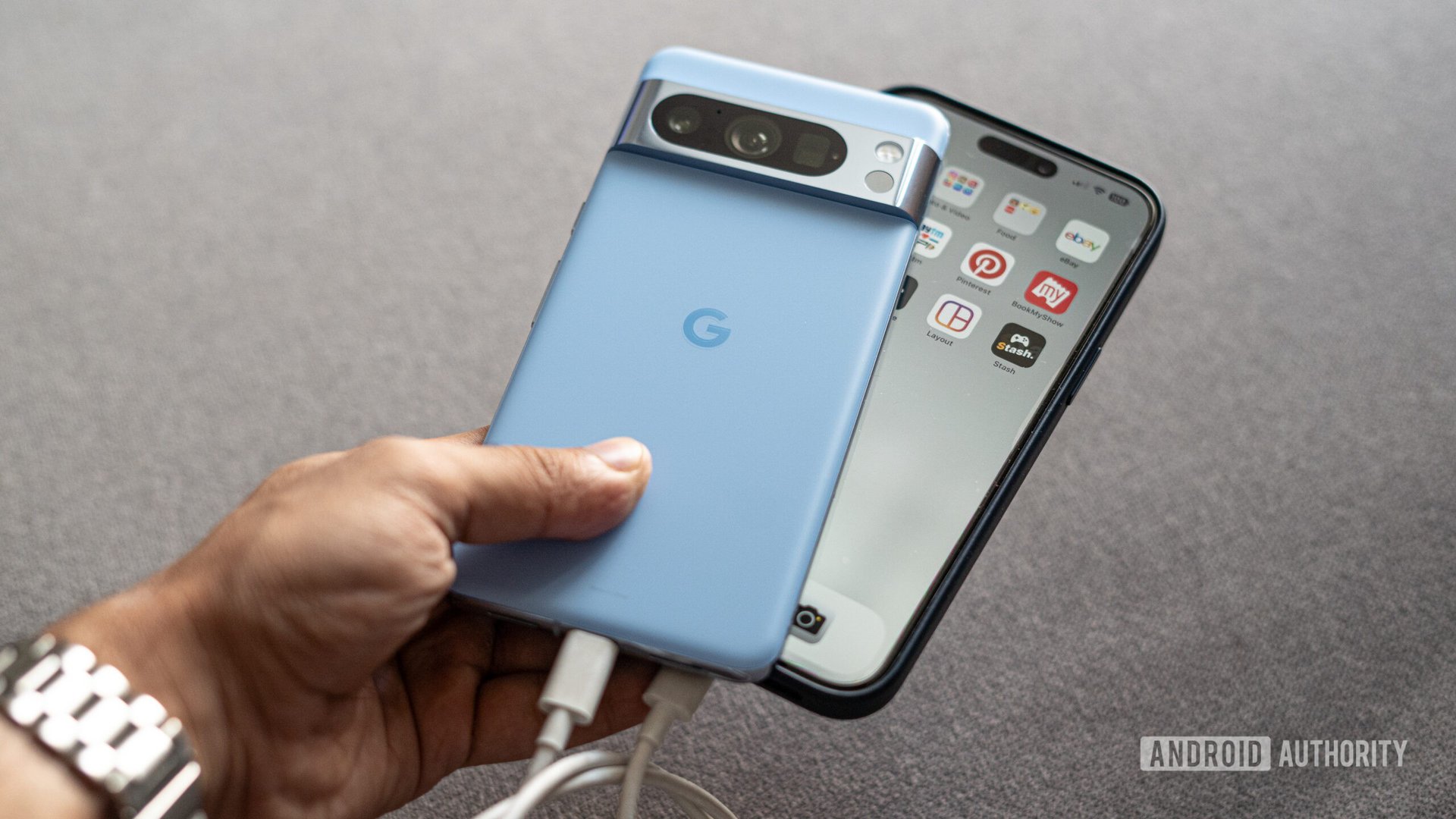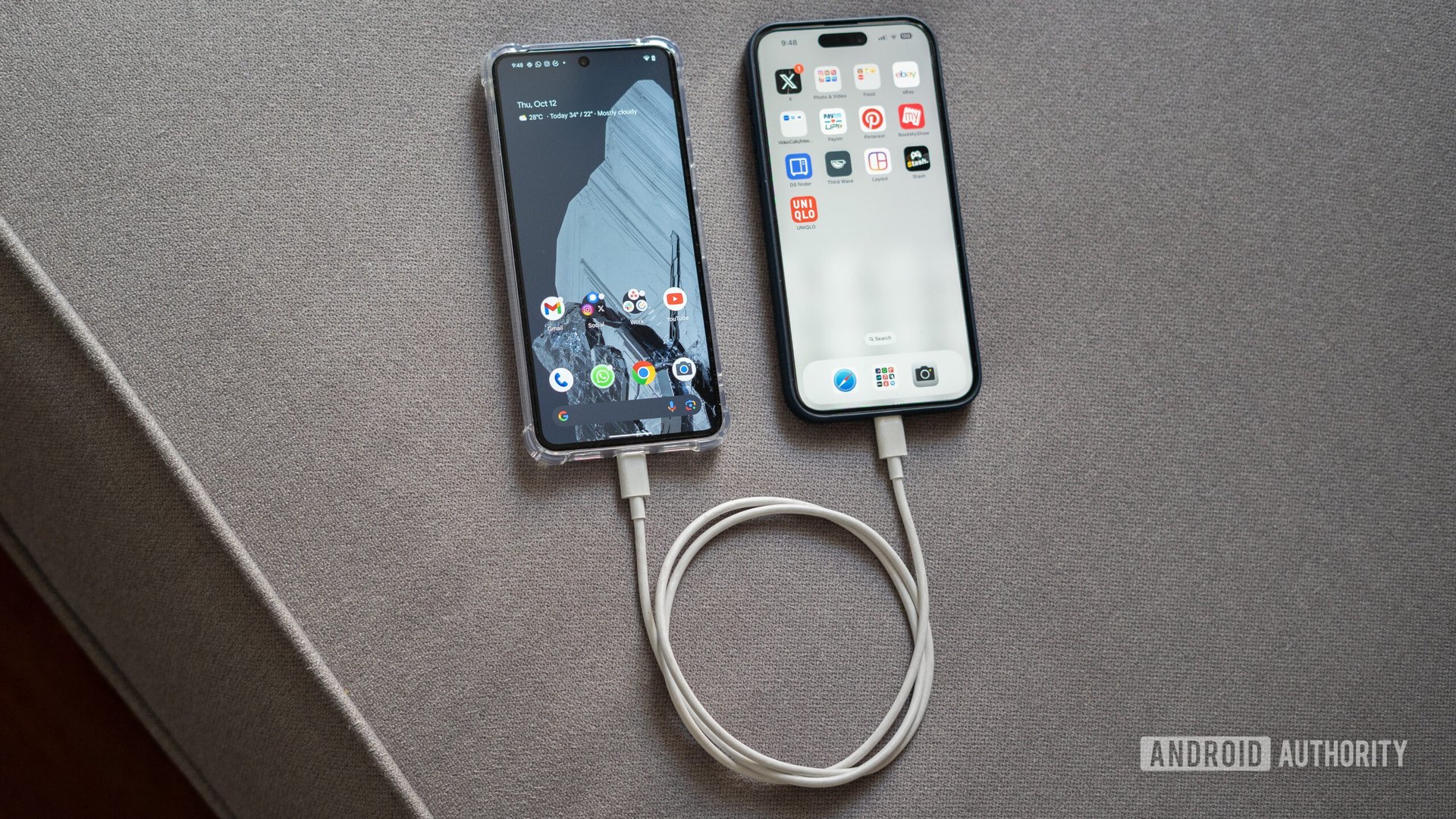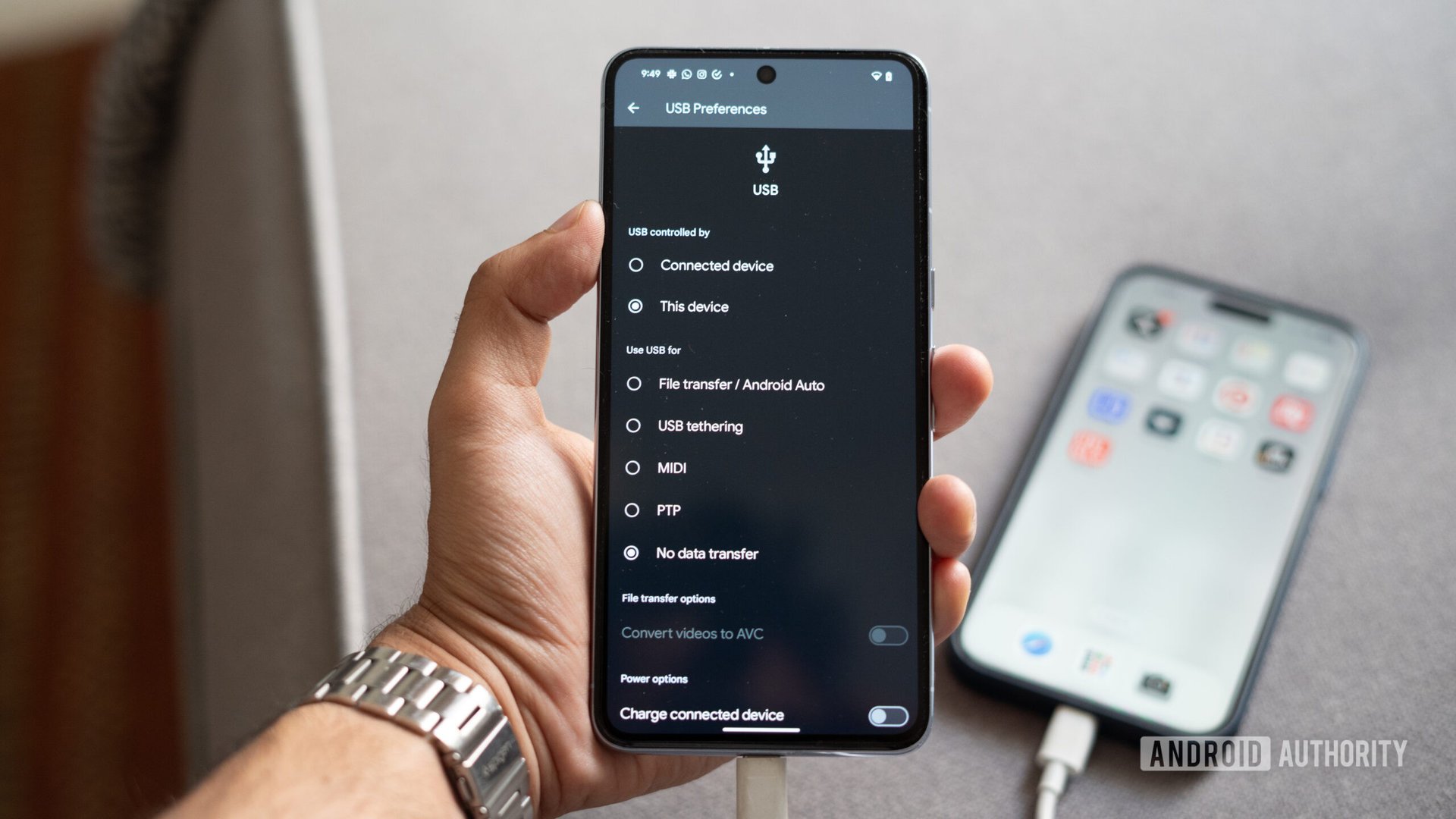Affiliate links on Android Authority may earn us a commission. Learn more.
We connected a Pixel 8 Pro to an iPhone 15 Pro via USB-C: Here's what happened
Published onOctober 12, 2023

- We connected an iPhone 15 Pro to the Pixel 8 Pro to see what would happen.
- The iPhone 15 Pro draws power from the Pixel 8 Pro if it is at a lower power level.
- If the Pixel 8 Pro is set to control USB, it will charge using the iPhone 15 Pro.
- The Pixel 8 Pro allows users to charge the connected device and transfer files from the iPhone.
The season’s hottest Android phone — the Pixel 8 Pro is finally out. But there’s been another smartphone doing the rounds for its new-fangled USB-C support. It’s not a stretch to imagine that you might wonder what exactly happens when you connect a Pixel 8 Pro to an iPhone 15 Pro Max over USB-C. We put it to the test to answer that question.
So, what happens when you connect an iPhone 15 Pro and a Pixel 8 Pro over USB-C?

There are many possibilities regarding how the two phones will behave, and they all largely depend on the current battery level of the two phones. Since both the iPhone 15 Pro Max and the Pixel 8 Pro support USB-PD, the two phones, by and large, follow a power delivery negotiation protocol to decide which phone will get juiced up.
The iPhone 15 Pro Max is usually smart enough to determine which of the two phones has a higher battery status. When connected to a Pixel 8 Pro, we observed that the iPhone drew power from the Pixel 8 Pro as long as the iPhone was at a lower power level. When the Pixel 8 Pro was at a lower power level than the iPhone 15 Pro Max, Apple’s flagship would serve as a costly battery pack instead.
Things are a bit more complicated with the Pixel 8 Pro in control.
Things are a bit more complicated with the Pixel 8 Pro in control. While the iPhone offers no settings to control which device will lead the decision-making for power negotiation, it is possible to control this through a toggle option on Android. When set to the Pixel, the phone draws power from the iPhone even if it is in a higher state of charge. In fact, you’ll have to trigger the option to charge the iPhone manually.
The Pixel also presents a range of additional options, including the ability to transfer files when connected to the iPhone. In our testing, the Pixel was very inconsistent in its tackling of the iPhone’s file system. While the Google phone could occasionally read photos and videos from the iPhone’s filesystem, it didn’t always work even with the exact same settings. The flaky nature of the implementation makes us wary of recommending it as a viable use case. The iPhone, on the other hand, cannot read the Pixel 8 Pro’s filesystem and will not let you view or transfer photos and videos.

So there you go, the best-case scenario when you connect an iPhone 15 Pro and a Pixel 8 Pro is that the phone with a higher battery status will charge the other phone.
However, if you set the Pixel 8 Pro as the dominant device, it is highly likely that the phone will draw power from the iPhone regardless of the power status of the two phones. Transferring files between the two phones is also technically possible, but the Pixel 8 Pro doesn’t always successfully read the iPhone’s filesystem, making it ill-suited to the task.